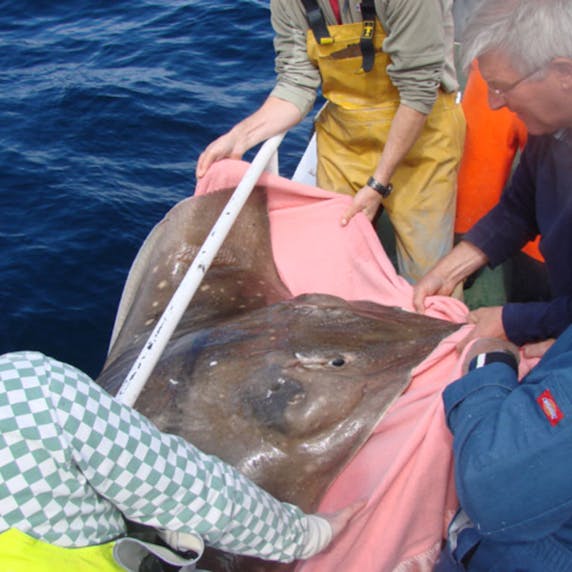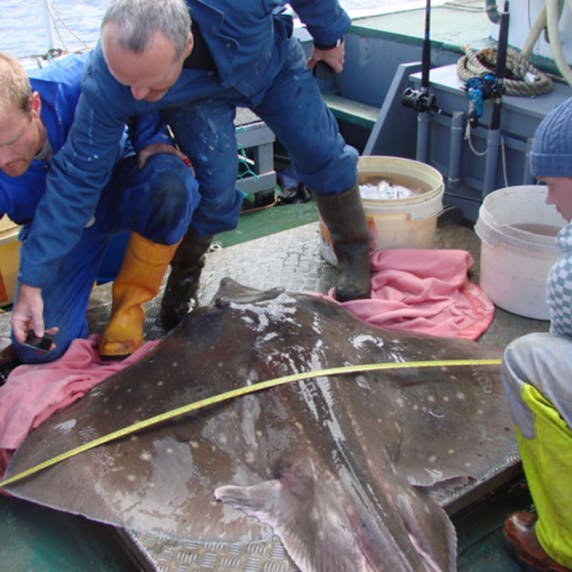
Rotterdam Zoo also protects species that cannot be seen in the park. A good example is the flapper skate. This large skate used to be common on the seabeds of Europe, but its numbers have declined sharply due to overfishing. Rotterdam Zoo coordinates the European monitoring program of the skate: the only population management program without animals in zoos.
Dipturus intermedius

Onbekend, waarschijnlijk meer dan 40 jaar
Spanwijdte: maximaal 200 centimeter
Maximaal 285 centimeter
Tot 100 kilogram
The skate is one of the largest species of fish in northern European seas. It is a type of ray; a flat relative of the sharks with the eyes on top and the mouth and gills on the bottom. They swim using their large pectoral fins. Those fins give the skate a characteristic diamond-shaped appearance.
The flapper skate once occurred in large numbers in the North Sea, Norwegian Sea and around the British Isles and Iceland. Today, they mostly inhabit places unsuitable for fishing. They live on sandy and muddy sea bottoms, usually up to about 200 meters deep.

The flapper skate scours the sea floor for lobsters, crabs and shrimp. When it catches one, it breaks open their tough armour with its strong jaws. But the skate does not just hunt along the sea floor; it is fast and agile enough to catch fish like mackerels. The skate is at the top of the food chain. If they are doing well somewhere, you know there are plenty of prey, indicating that the area is healthy.

The biggest threat to the flapper skate is intensive fishing. When ships drag large trawling nets along the sea floor, they entangle skates in the nets. As a result, the number of flapper skates has declined significantly over the past century. Fortunately, today it is prohibited for EU countries to fish for flapper skates. However, flapper skates still end up as bycatch in fishing nets.

The eggs of the flapper skate grow up to 20 centimeters long. They are also referred to as "mermaid's purse" because they resemble handbags. It takes about 530 days for the skate to hatch from the egg capsule. Consequently, flapper skates grow at a slow pace: they also don't become fertile until 11 years old. Females also reproduce only once every two years. Therefore, the population of the flapper skate recovers slowly. In addition, flapper skates do not tend to travel long distances; they usually stay in the area where they were born. This means that in places where there used to be a lot of fishing, the flapper skate has difficulty returning.
In 2021, the European Association of Zoos and Aquaria (EAZA) launched a monitoring program for the flapper skate. Although there are currently no flapper skates in aquaria, the EAZA is looking into the possibility of breeding them. To do so, the EAZA is investigating what it takes to properly keep the skate in an aquarium, taking into account all the needs of this large predatory fish. Rotterdam Zoo coordinates this monitoring program. This way, we contribute to the conservation of the flapper skate.

